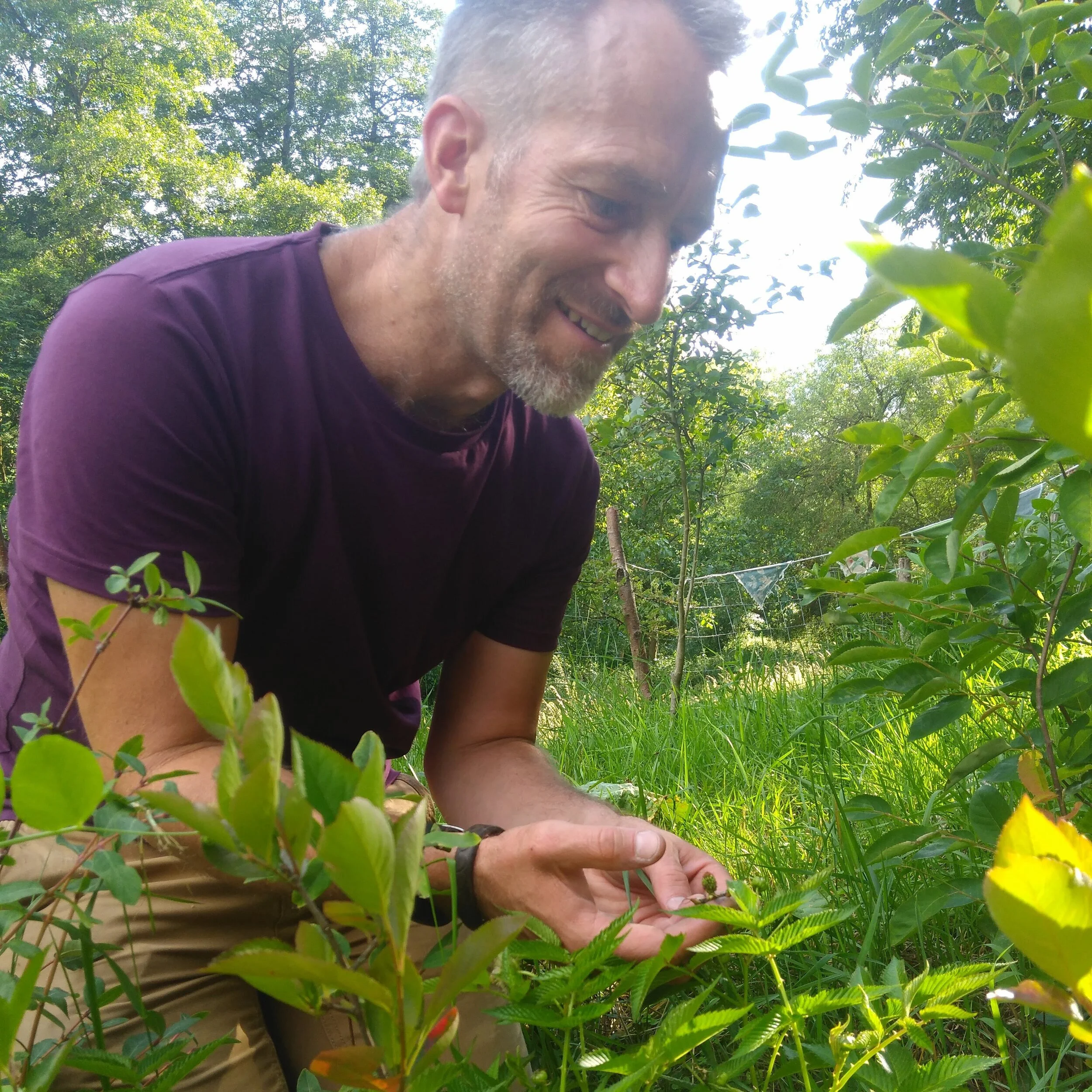Forest Gardens and Fruit
We chat with forest garden designer and edible landscaper Mark Lord in south-western Germany.
“A garden should be a holistic experience, feeding all of your senses, and your mind,” says Lord. He believes food gardens can be about more than just eating—that they can also be visually appealing, bio-diverse, and appeal to other senses such as smell.
We also digress into his experiments making liqueur including linden, serviceberry, cherry…and nettle!
Lord operates The Fruit Nursery, which specializes in unusual and rare plants that produce edible fruit.
Forest Garden Design
Lord talks about the 7 layers that he builds into his forest garden designs.
Upper Tree Layer. This includes taller tree species such as apple, mulberry, and quince.
Lower Tree Layer. This includes shorter trees such as serviceberry.
Vertical Layer. This is a climbing layer with vines such as kiwi, grape—or even vining peas.
Shrub Layer. This includes smaller shrubs such as barberry and currant.
Herb Layer. This layer includes herbaceous plants.
Ground-Cover Layer. This layer can include plants such as creeping bramble.
Underground Layer. This layer includes plants with edible roots, e.g. horseradish.
Lesser Known Fruit
Lord’s passion is unusual and rare plants that produce edible fruit. Here are some of the plants we discuss in the podcast:
Elderberry. In addition to Canada elderberry, he grows blue elderberry (Sambucus caerulea), which he loves for the visual impact of the bright blue fruit.
Serviceberry. He explains that in addition to fruit, serviceberry offers showy white flowers in spring, attractive grey bark in winter—and colourful leaves in the fall.
Haskap. Called “blue honeysuckle” in Europe, he feels this plant deserves space in more gardens for both the fruit and the fall leaf colour.
Clove Currant. This common hedging shrub belongs in edible landscapes too! It has flowers, fragrance, and fruit. “It’s kind of like a black-currant-not-lovers currant,” says Lord.
Cherry Plum. “Cherry plums are fantastic!”
Hardy Kiwi. The vining hardy kiwi is an excellent way to incorporate a vertical layer into a forest garden. He notes that 2 plants are necessary, both a male and female.
Cornelian Cherry. This is Lords favourite. Along with early flowers, this shrub has delicious fruit.

